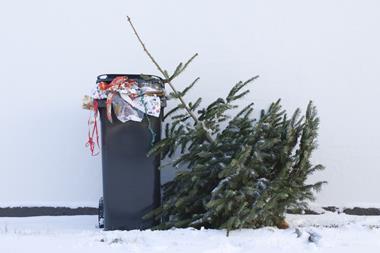
Plastic reduction pledges have long been the focus of retail sustainability efforts for good reason – the industry has no way of getting products to consumers without protection from degradation and contamination. However, the materials we use are not being dealt with effectively.
While individual efforts to reduce packaging are, in many cases, worthy of praise, progress is frustratingly slow. Brands are pulling in different directions. For many of us signed up to Wrap’s UK Plastics Pact, which set a goal to eliminate categories of single-use plastic and achieve a minimum of 30% recycled plastic packaging by 2025, time is running out.
There are two important considerations when looking at how to make packaging more sustainable: how can we reduce CO2 emissions, and how can we cut single-use plastic waste?
Often, efforts are targeted heavily towards just one. Lightweighting initiatives optimise for emissions but result in packaging that’s even harder to recycle. Another option is to switch plastic for materials like glass or aluminium, which introduces embedded emissions higher than the plastic they’re replacing, despite the fact they’re easy to recycle. And that’s before we even factor in the transport emissions of heavier packaging.
In the absence of government regulation, the packaging industry has been left to find its own solutions. Packaging can delight and communicate with consumers, but we’re ignoring the issues some of this innovation can create, undermining the ability of waste processors to generate value from the material they collect.
This results in many councils resorting to the lesser evil of burning rubbish through waste to energy, often overseas, because the promised standardised waste collection scheme is years behind schedule. It’s marginally better than being left in landfill, but a far cry from the circular economy the industry presents to the public. It isn’t good enough.
So, what does ‘good’ look like? We’re all familiar with the ‘5 Rs’ framework – remove, reduce, reuse, repurpose, recycle. Many packaging products have focused on ’reduce’ at the expense of all the others because this makes it easy to report impressive stats about the weight of plastic saved by selling more of a new product over an old one.
It’s a contradiction in terms – weight reduction is only fulfilling part of the brief if nobody can reuse, repurpose or recycle the resulting waste, and it does little to challenge the consumption pattern of single-use items. If anything, it encourages a shift to cheap and disposable film-based packaging that makes our recycling challenges worse because it’s nearly impossible to separate the different plastics – meaning it can only be downcycled.
Reuse must be the end goal of a successful circular economy. Keeping material in its intended use for as long as possible ensures more extraction doesn’t further damage our planet. But costs often present significant obstacles to retailers and brands alike due to the challenge of getting material back.
Many of these projects are coupled with ‘zero plastic’ pledges that undermine the efficacy of a long-term refill scheme – plastic can be an extremely useful material, just as glass and metals can. At Abel & Cole, we launched our Club Zero refillable milk bottle at price parity with single-use bottles because we chose to reuse plastic – it wouldn’t have been possible with glass and, moreover, our data shows it would’ve been less sustainable to do so.
This is just one step that’s needed to make reuse a scalable solution for the industry at large, and ultimately it can only work at scale. But the more that we as an industry collaborate on pack designs and material choices, the easier it becomes for the technologies and returns behaviour to make that scale a reality.
We’re already seeing success in this area through the work of GoUnpackaged, Dizzie, Reposit and Again – but we need the industry to come together to make that happen. And we need it now.



















No comments yet